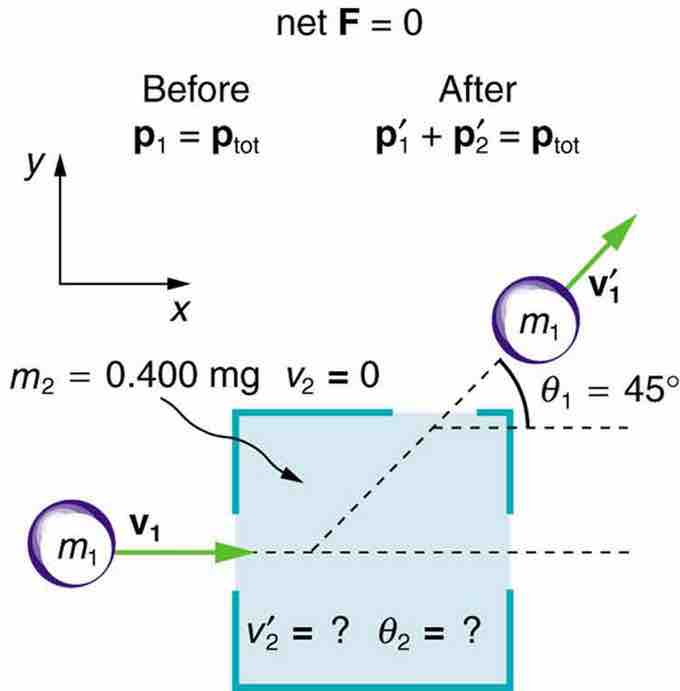At this point we will expand our discussion of inelastic collisions in one dimension to inelastic collisions in multiple dimensions. It is still true that the total kinetic energy after the collision is not equal to the total kinetic energy before the collision. While inelastic collisions may not conserve total kinetic energy, they do conserve total momentum .
We will consider an example problem in which one mass
where
The object is to calculate the magnitude and direction of the velocity of the second mass. After this, we will calculate whether this collision was inelastic or not.
Since there are no net forces at work (frictionless surface and negligible air resistance), there must be conservation of total momentum for the two masses. Momentum is equal to the product of mass and velocity. The initially stationary mass contributes no initial momentum. The components of velocities along the x-axis have the form
Expressing these things mathematically:
The components of velocities along the y-axis have the form v \cdot sin θ, where θ is the angle between the velocity vector of the mass of interest and the x-axis. By applying conservation of momentum in the y-direction we find:
If we divide Eq. 3 by Eq. 2, we will find:
Eq. 4 can then be solved to find
Now let' use Eq. 3 to solve for
After plugging in our known values, we find that
We can now calculate the initial and final kinetic energy of the system to see if it the same.
Initial Kinetic Energy =
Final Kinetic Energy =
Since these values are not the same we know that it was an inelastic collision.

Collision Example
This illustrates the example problem in which one mass collides into another mass that is initially stationary.